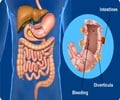Discover how BPA exposure alters gut microbiota in children, potentially leading to obesity. Learn about the unique bacterial strains that combat BPA's effects.
- Children with normal weight have more diverse gut bacteria than obese kids
- These diverse microbes can help break down Bisphenol A (BPA), a microplastic chemical linked to health risks
- Understanding these connections could lead to future interventions to combat childhood obesity
Bisphenol A exposure affects specific gut taxa and drives microbiota dynamics in childhood obesity
Go to source). Recent studies have suggested that elevated BPA exposure may not only pose health risks but also impact the structure of the gut microbiome , raising concerns about its potential contribution to childhood obesity.
Shedding Light on the Link Between Microbes, Plastics, and Weight in Kids
In a recent study conducted in Spain, researchers sought to unravel the intricate connections between BPA exposure, gut microbiota, and childhood obesity. The study, published in mSystems, involved over 100 children, aged 5 to 10, and explored the microbial communities associated with BPA exposure and degradation.The primary objective was to gain a deeper understanding of the complex relationship between these factors, with a focus on their potential implications for childhood obesity.
Did You Know?
The primary source of exposure to BPA for most people is through the diet. While air, dust, and water are other possible sources of exposure, BPA in food and beverages accounts for the majority of daily human exposure.
The Gut-Obesity Connection in Children
The research revealed several significant findings that shed light on the nuanced interactions between BPA, gut microbiota, and body mass index (BMI). Notably, normal-weight children exhibited a higher diversity of unique bacteria taxa compared to their overweight or obese counterparts. This suggests that BPA exposure may influence microbial communities differently depending on the BMI of the individual.Microbiologist Margarita Aguilera, a senior author of the study, highlighted the importance of these findings, emphasizing the intricate interplay between gut microbiota and the potential pathophysiological consequences of cumulative BPA exposure.
The study's innovative approach, combining analyses of cultured samples with amplicon sequencing, provided a detailed understanding of 333 BPA-resistant bacterial species.
The study's results indicated that specific bacterial species, including Clostridium and Romboutsia, promoted the richness of microbiota communities in response to BPA exposure. Importantly, normal-weight children demonstrated a more resilient and structured network of bacteria, suggesting that their gut microbiota may better withstand the impact of xenobiotic substances like BPA.
The researchers proposed that identifying these microbial strains involved in the complex interplay between BPA, obesity, and the gut microbiome could pave the way for future interventions and policy changes to mitigate the risk of childhood obesity globally.
Additionally, the study hinted at the need to investigate how exposure to other synthetic chemicals, such as parabens and phthalates, might influence the composition of the gut microbiome.
Read More to Know About ‘High BPA Levels Linked to Prostate Cancer’
Raising Awareness to Make Informed Choices
This study underscores the importance of public awareness regarding the potential health risks of microplastics. By understanding these connections, we can make informed choices to protect ourselves and future generations.It's important to acknowledge that this study is a starting point. Further research is needed to establish a causal relationship between BPA exposure, gut microbiota, and childhood obesity. Additionally, the study's focus on a specific age group and geographical location necessitates further investigations to confirm the the findings.
In conclusion, there is an intricate relationship between BPA exposure, gut microbiota, and childhood obesity. By unraveling the microbial dynamics influenced by BPA, we can move towards developing strategies to promote gut health, potentially reducing the risk of obesity and other health issues in children.
As awareness grows, it becomes crucial for individuals to understand and address the health concerns posed by the infiltration of microplastics into our bodies and the environment.
Reference:
- Bisphenol A exposure affects specific gut taxa and drives microbiota dynamics in childhood obesity - (https://journals.asm.org/doi/10.1128/msystems.00957-23)
Source-Medindia
















